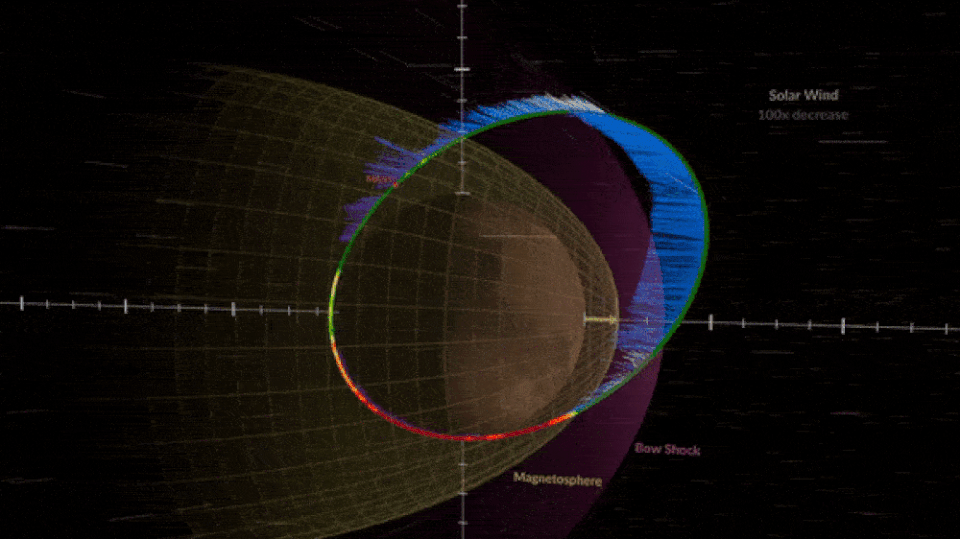'Almost unbelievable': Rare void from the sun briefly blew up Mars' atmosphere last year, and it could happen to Earth too

Late last year, Mars' atmosphere briefly blew up to around three times its normal size without warning, leaving scientists puzzled. Now, researchers have discovered that the expansion was triggered by a rare gap, or "void," in the charged particles that continuously stream out of the sun, known as solar wind.
This sudden atmospheric "ballooning" has also happened on Earth at least once before and could happen again soon.
On Dec. 26, 2022, NASA's Mars Atmosphere and Volatile Evolution (MAVEN) Orbiter — which has been circling the Red Planet's upper atmosphere since 2014 — witnessed Mars' magnetic shield, or magnetosphere, swell outward by "thousands of miles," researchers wrote in a statement. This enabled the wispy Martian atmosphere to temporarily expand and fill the extra space.
After reviewing the spacecraft's data, MAVEN scientists noticed that the atmospheric expansion coincided with a 100-fold decline in solar wind particles hitting the spacecraft.
"When we first saw the data, and how dramatic the drop in the solar wind was, it was almost unbelievable," Jasper Halekas, a solar physicist at the University of Iowa who led the investigation into the rare event, said in the statement.
The researchers presented their findings Dec. 11 at the ongoing American Geophysical Union's Fall Meeting, which is being held in San Francisco until Dec. 15.
It was a "truly anomalous solar event," Shannon Curry, the principal investigator of the MAVEN mission, said in the statement.
Related: Astronauts on Mars may see a green sky, eerie new study suggests

Normally, solar wind constantly bombards Mars and every other planet in the solar system, which has caused Mars to lose most of its atmosphere. Mars' magnetosphere, or what is left of it, is always pushing against the solar wind, which diverts most of the streaming particles around the planet.
However, when the solar wind dropped off there was nothing for the magnetosphere to push against, so it "ballooned" outward, experts said in a NASA video.
But as soon as the solar wind returned to normal it shoved the magnetosphere back into place.
A similar phenomenon occurred on Earth in 1999, when the solar wind "nearly vanished" for three days (May 10 to 12), which enabled our atmosphere to swell up to 100 times its normal volume before eventually returning to its previous size, according to NASA. This event did not cause any noticeable short-term or long-term damage to our planet.
Researchers believe these sudden disappearances of solar wind are the result of rare gaps in the streaming particles. These gaps occur because unusually fast particles in solarwind sometimes catch up to or overtake the particles ahead, leaving a space where solar wind would normally be.
related stories
—Mars is spinning faster, and scientists aren't sure why
—Scientists finally solve mystery of strongest Marsquake ever detected
—Mars may be slowly ripping its largest moon apart
In a 2008 study published in the journal Astronomy & Astrophysics, researchers linked the 1999 atmospheric expansion event on Earth to a large "coronal hole," or gap in the solar surface, that appeared shortly before our planet's atmosphere swelled. Coronal holes have weaker magnetic fields than the rest of the sun, which enables solar wind to race out of the sun faster than normal.
Coronal holes could become more common over the next few years as the sun reaches the explosive peak of its roughly 11-year cycle of activity, known as the solar maximum. We are already starting to see evidence of this.

